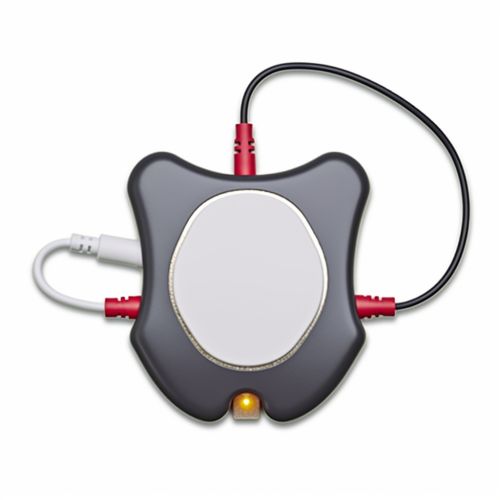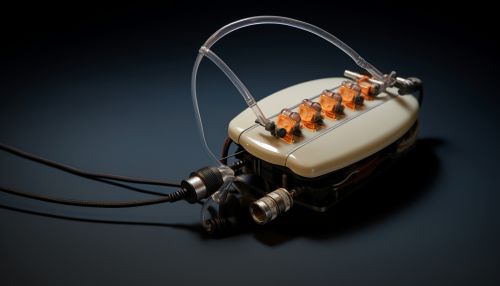Deep brain stimulation
Overview
Deep brain stimulation (DBS) is a neurosurgical procedure that involves implanting a medical device called a neurostimulator, which sends electrical impulses through implanted electrodes to specific targets in the brain (brain nuclei) for the treatment of movement and neuropsychiatric disorders. DBS in select brain regions has provided therapeutic benefits for otherwise treatment-resistant disorders such as Parkinson's disease, essential tremor, dystonia, chronic pain, major depression, and obsessive-compulsive disorder (OCD).
History
The modern history of DBS began in France with the work of Alim-Louis Benabid and colleagues. In 1987, they discovered that high-frequency stimulation of the thalamus could suppress the symptoms of Parkinson's, much like the lesioning procedures that were being used at the time.


Mechanism of Action
The exact mechanisms of action of DBS are still a matter of ongoing research. Initially, it was thought that the functioning of DBS is similar to creating a lesion in the brain, but this theory is now considered overly simplistic. Current theories propose that DBS works by a combination of inhibitory and excitatory effects at the site of stimulation, modulating the abnormal patterns of brain activity seen in different disorders.
Indications
DBS is primarily used as a treatment for neurological conditions such as Parkinson's disease, dystonia, and essential tremor. It is also used in some severe cases of major depressive disorder and OCD when these conditions are not responsive to other treatments. The FDA has approved DBS as a treatment for epilepsy. The use of DBS in treating other conditions such as chronic pain and Tourette syndrome is currently being researched.
Procedure
The DBS procedure involves several steps. First, a frame is attached to the patient's head and a high-resolution MRI scan is performed. The images from the scan are used to create a 3D map of the patient's brain, which is used to plan the exact location for electrode placement. The patient is usually awake during the procedure, which allows the surgical team to interact with the patient and make sure the electrodes are correctly placed.
Risks and Complications
As with any surgical procedure, DBS comes with potential risks and complications. These can include infection, stroke, or bleeding in the brain. Some patients may also experience changes in mood, cognition, or behavior after the procedure. Hardware complications, such as issues with the implanted device or the leads, can also occur.
Future Directions
Research into DBS is ongoing, with scientists exploring new uses for the technology, as well as ways to make it more effective and safer. One area of research is the development of "closed-loop" systems, which can automatically adjust the level of stimulation based on the patient's needs. Another area of interest is the use of DBS in treating conditions such as Alzheimer's disease, obesity, and addiction.
